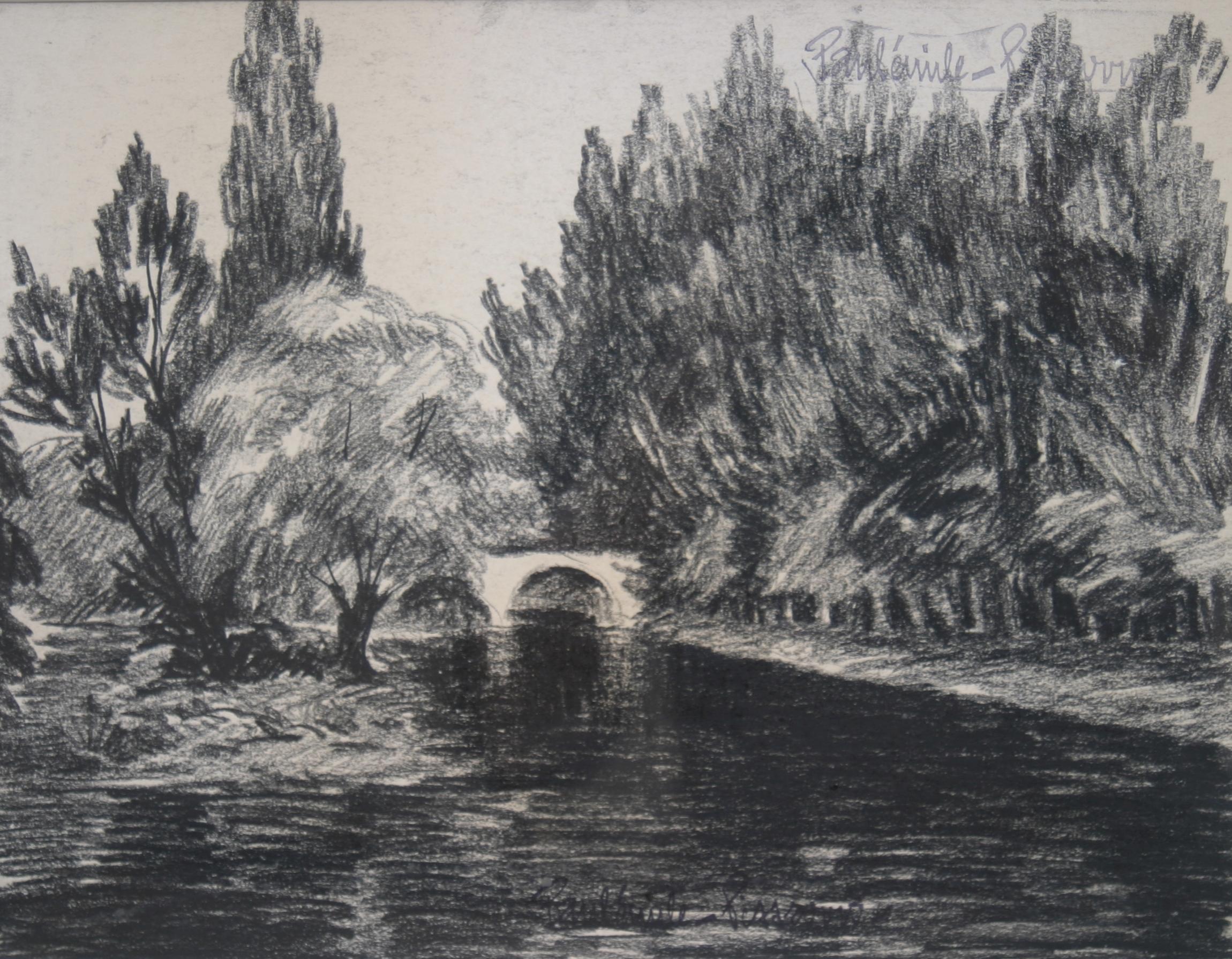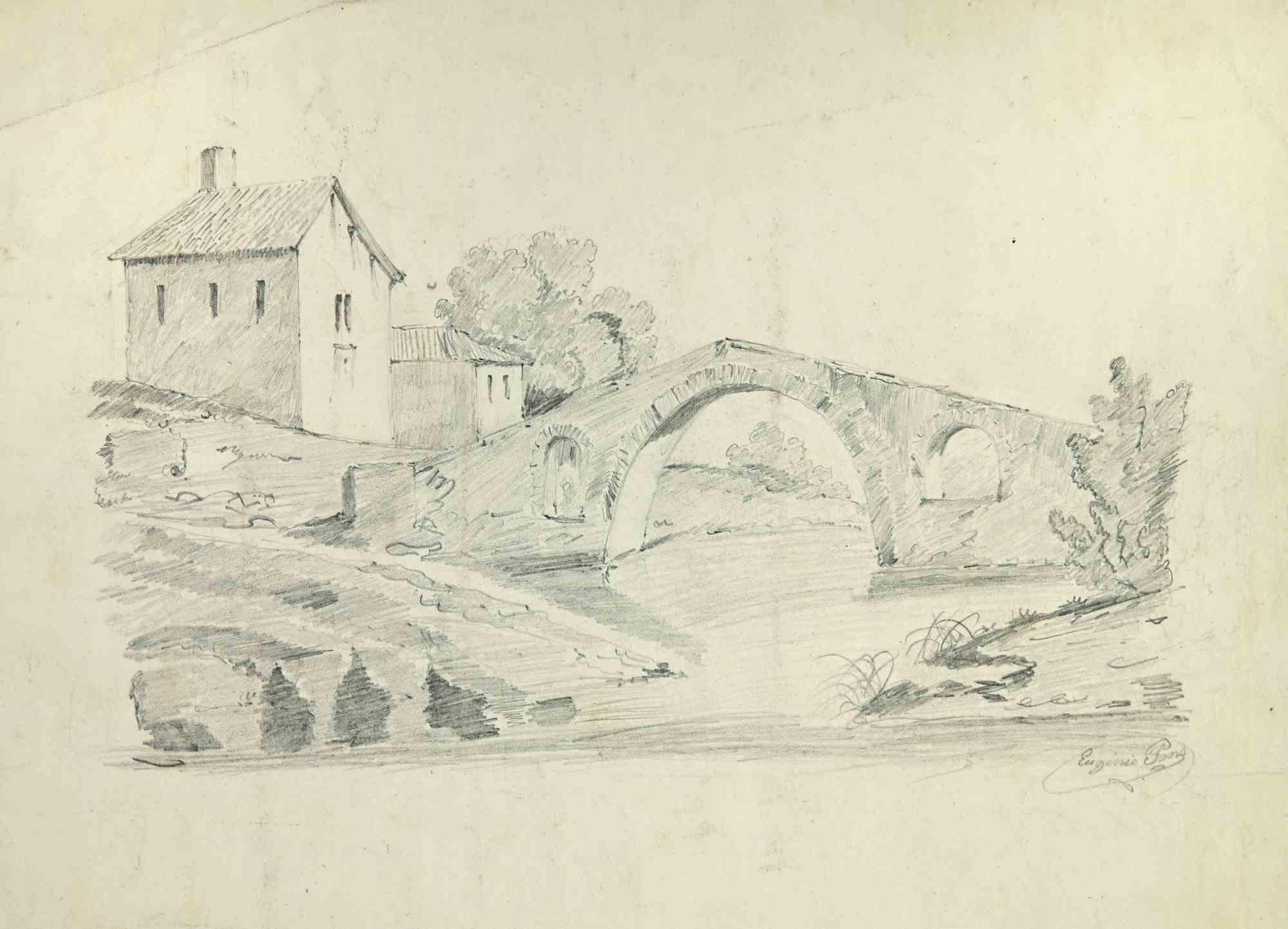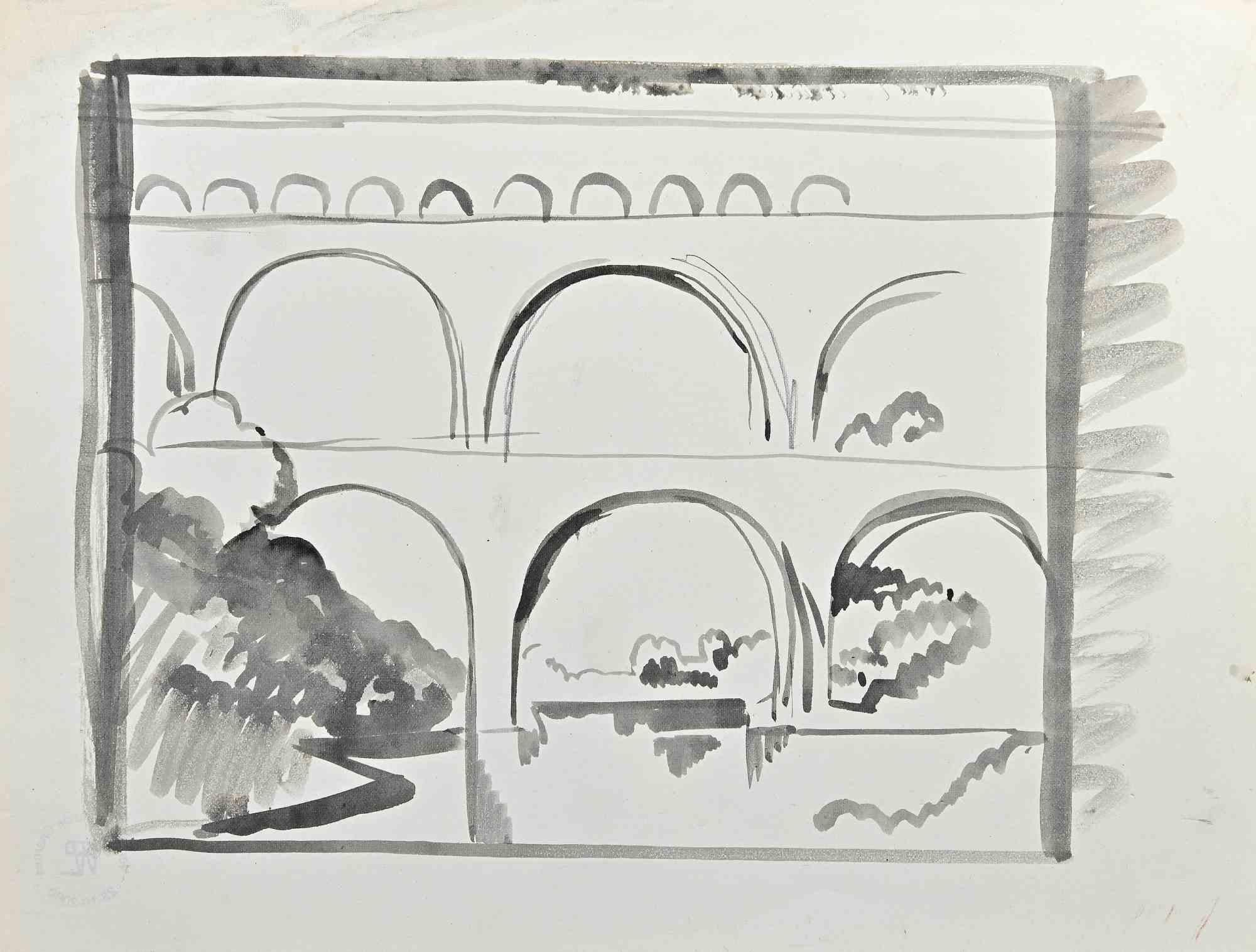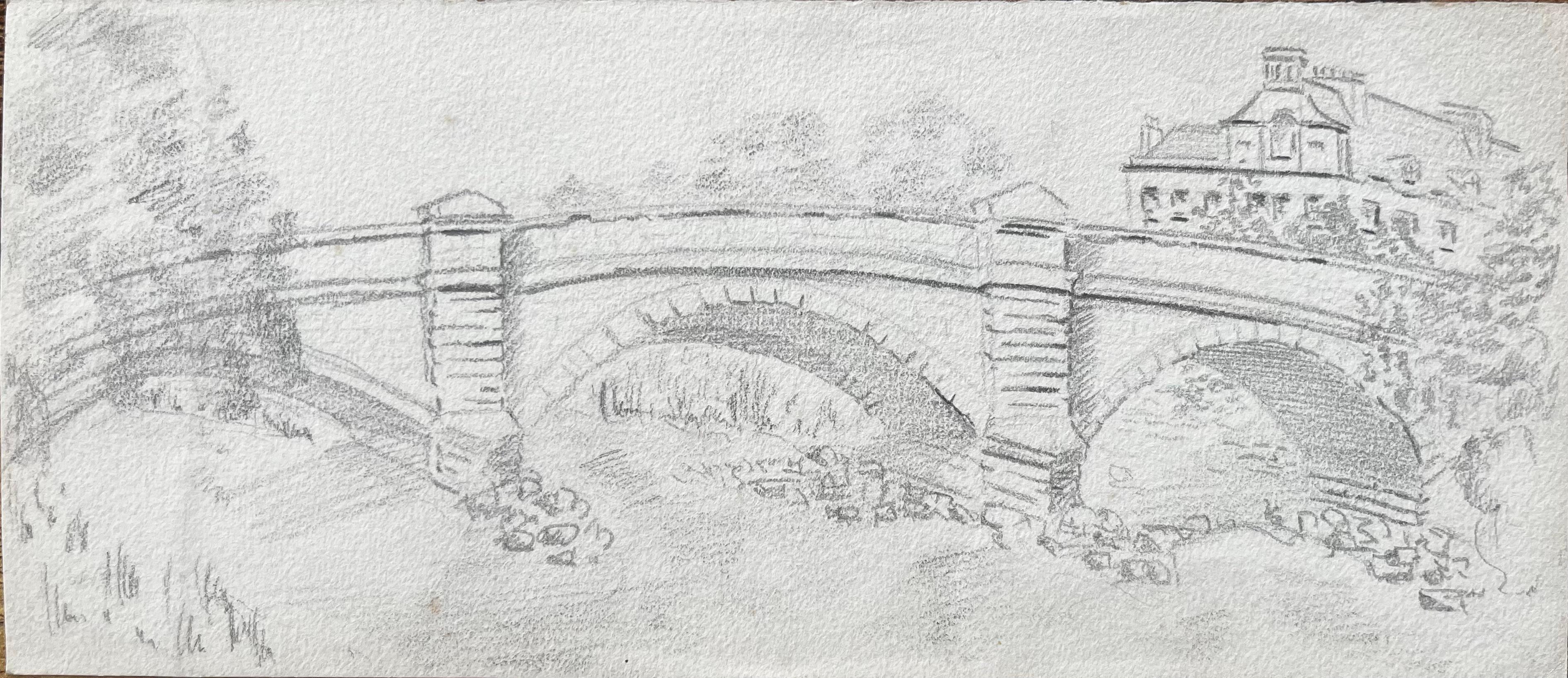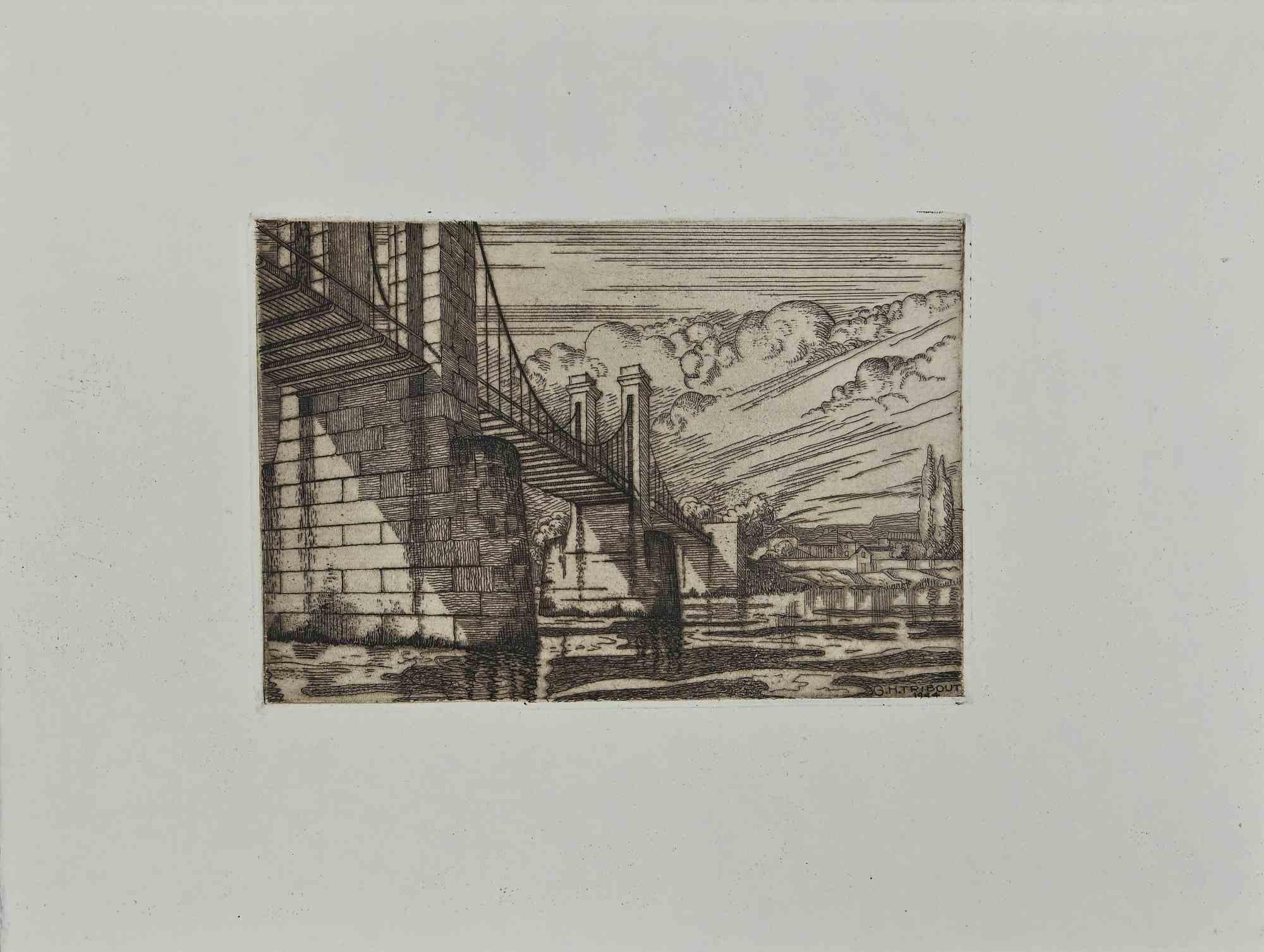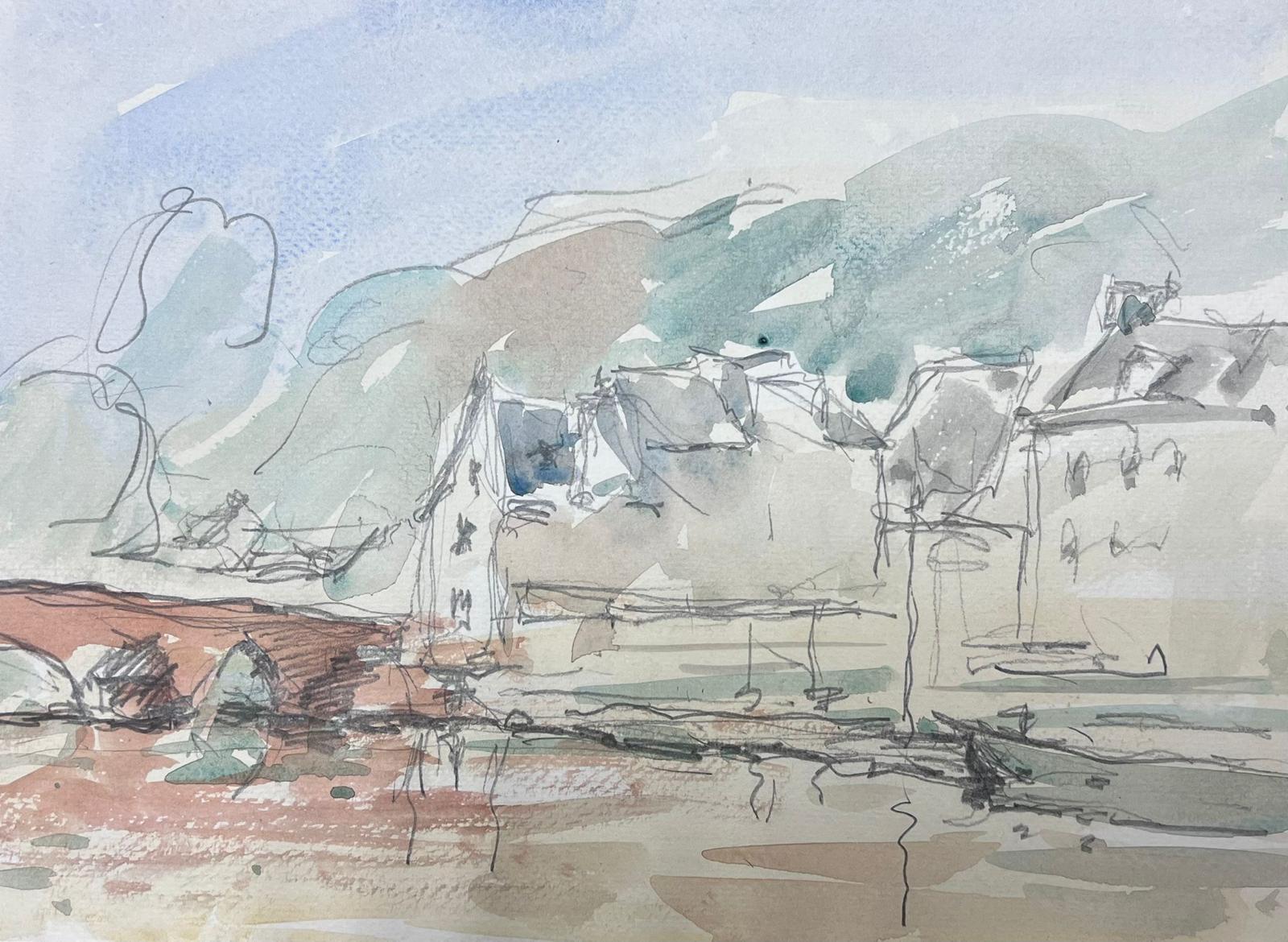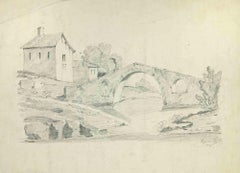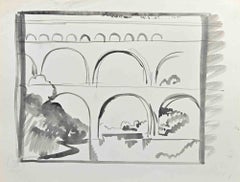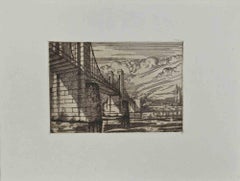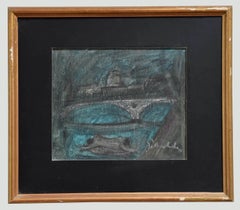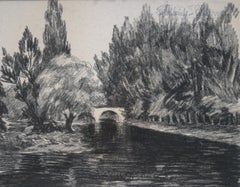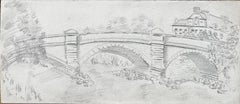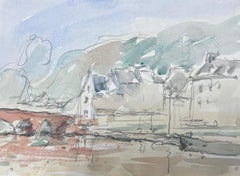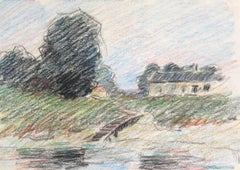Items Similar to Bridge on the River - Charcoal and Pencil by E.-L. Minet - 1919
Want more images or videos?
Request additional images or videos from the seller
1 of 2
Emile-Louis MinetBridge on the River - Charcoal and Pencil by E.-L. Minet - 19191919
1919
$356.70
£265.66
€300
CA$500.30
A$548.69
CHF 282.98
MX$6,554.58
NOK 3,589.08
SEK 3,366.97
DKK 2,286.04
About the Item
Bridge on the River is a beautiful drawing in pencil and charcoal realized by the French painter Emile-Louis Minet in 1919. The state of preservation is very good, except for a small rip on the lower margin of the paper, whilst the higher and lower left corners present some folds. The piece of paper was torn from a sketchbook, and it presents some fringes on the higher margin. On the back, two trees are sketched and there is a small writing in pencil with the date “18 August 1919”. Next to it, there is an unreadable word and below “Day”.
Louis Minet was an important artist from Normandy. He lived in Rouen, where he studied at the Ecole des Beaux-Arts. During his life, he achieved great success and won a mention of honor at the Salon of French Artists in 1882. In 1917, he was elected member of the Academy of Sciences and Fine Arts of Rouen and in 1905 curator of the Museum of Fine Arts of Rouen until 1922.
This artwork represents a beautiful French countryside: a large bridge on a river, maybe the Seine, and trees on the river bank. The artist was a realist painter, who paid much attention to air, light, and atmosphere. He drew inspiration from the landscapes and countryside of Normandy en plen air, as it probably occurred in this precise and dynamic drawing, typical of this artist’s production and of coeval painting.
- Creator:Emile-Louis Minet (1841 - 1923)
- Creation Year:1919
- Dimensions:Height: 6.58 in (16.7 cm)Width: 8.39 in (21.3 cm)Depth: 0.04 in (1 mm)
- Medium:
- Movement & Style:
- Period:
- Condition:Insurance may be requested by customers as additional service, contact us for more information.
- Gallery Location:Roma, IT
- Reference Number:Seller: M-1028421stDibs: LU65034950431
About the Seller
4.9
Platinum Seller
Premium sellers with a 4.7+ rating and 24-hour response times
1stDibs seller since 2017
7,758 sales on 1stDibs
Typical response time: 2 hours
- ShippingRetrieving quote...Shipping from: Monaco, Monaco
- Return Policy
Authenticity Guarantee
In the unlikely event there’s an issue with an item’s authenticity, contact us within 1 year for a full refund. DetailsMoney-Back Guarantee
If your item is not as described, is damaged in transit, or does not arrive, contact us within 7 days for a full refund. Details24-Hour Cancellation
You have a 24-hour grace period in which to reconsider your purchase, with no questions asked.Vetted Professional Sellers
Our world-class sellers must adhere to strict standards for service and quality, maintaining the integrity of our listings.Price-Match Guarantee
If you find that a seller listed the same item for a lower price elsewhere, we’ll match it.Trusted Global Delivery
Our best-in-class carrier network provides specialized shipping options worldwide, including custom delivery.More From This Seller
View AllThe Old Bridge - Drawing by Eugène Pons - Early 20th century
Located in Roma, IT
The Old Bridge is a drawing realized by Eugène Pons in the early-20th century.
Pencil drawing on paper.
Hand-signed.
Good conditions with slight foxing and folding.
Category
Mid-20th Century Modern Figurative Drawings and Watercolors
Materials
Pencil
The Bridge - Drawing by Hermann Paul - Early 20th Century
Located in Roma, IT
The Bridge is a Black and White Drawing in watercolor realized by Hermann Paul.
Good condition.
René Georges Hermann-Paul (27 December 1864 – 23 June 1940) was a French artist. He ...
Category
Early 20th Century Modern Figurative Drawings and Watercolors
Materials
Paper, Watercolor
The Bridge -Original Etching by George-Henri Tribout - Early 20th Century
By Georges-Henri Tribout
Located in Roma, IT
The Bridge is an original artwork realized by George Henri Tribout.
Original etching on paper glued on cardboard.
Signature and dated on the lower right corner.
George Henri Tribo...
Category
Early 20th Century Modern Landscape Prints
Materials
Etching
The Bridge - Original Charcoal Drawing by N. Gattamelata - 1970s
By Nazareno Gattamenata
Located in Roma, IT
The Bridge is a mixed colored charcoal drawing realized by Nazareno Gattamelata in the second half of XX century.
Hand signed by the artist on the lower right margin.
The artwork i...
Category
1970s Contemporary Landscape Drawings and Watercolors
Materials
Charcoal
Landscape in France - Original Drawing - Mid-20th Century
Located in Roma, IT
Landscape in France is an original drawing in China Ink and Watercolor realized by an anonymous artist in the mid-20th Century.
Good Conditions.
The artwork is depicted through so...
Category
Mid-20th Century Modern Figurative Drawings and Watercolors
Materials
Pencil
The Bridge - Original Etching by P, A, Bouroux - First Half of 20th Century
By Paul-Adrien Bouroux
Located in Roma, IT
The Bridge is an original artwork realized by the French artist Paul Adrien Bouroux in the first half of the XX century, original etching on paper, signed.
Image dimension: 23 x 17
...
Category
Early 20th Century Modern Figurative Prints
Materials
Etching
You May Also Like
Le Pont du Vey by Paulémile Pissarro - Charcoal drawing
By Paul Emile Pissarro
Located in London, GB
Le Pont du Vey by Paulémile Pissarro (1884-1972)
Charcoal on paper
24.5 x 31.5 cm (9 ⁵/₈ x 12 ³/₈ inches)
Signed with Estate stamp lower centre and upper right
Executed circa 1940s
...
Category
1940s Post-Impressionist Figurative Drawings and Watercolors
Materials
Paper, Charcoal
Stone Bridge River Scene with Trees and Townhouse Pencil Drawing
Located in Cirencester, Gloucestershire
Title: Stone Bridge River Scene with Trees and Townhouse Pencil Drawing
By Tony Herbert (1927-2024)
Medium: Pencil drawing on paper, unframed
Size: 4 inches (height) x 9.5 inches (wi...
Category
20th Century Impressionist Landscape Paintings
Materials
Pencil
French Impressionist Watercolour Landscape Parisian Bridge Sketch
By Maurice Mazeilie
Located in Cirencester, Gloucestershire
"Landscape"
by Maurice Mazeilie (French)
watercolour painting on artist paper, unframed
painting: 8.25 x 11.75 inches
A delightful original oil painting by the 20th century French ...
Category
20th Century Impressionist Landscape Paintings
Materials
Watercolor
Bridge Scene, French Impressionist painting
By Camille Meriot
Located in Cirencester, Gloucestershire
"Bridge Scene"
by Camille Meriot (French 1887-1975)
watercolour on unframed paper
paper: 6.5 x 8.75 inches
Fine original French Impressionist painting...
Category
Mid-20th Century Impressionist Landscape Paintings
Materials
Watercolor
French Watercolor of Pont Royal, Paris, 1921
Located in Houston, TX
Combining soft sunlight, shadows, and reflections, French artist G. Genin provides an impressionistic view of the Pont Royal in Paris, 1921. Located between the Quai Anatole France a...
Category
1920s Landscape Drawings and Watercolors
Materials
Paper, Watercolor
Le Pont de Segovie
By Eugene Bejot
Located in Middletown, NY
Etching on cream wove paper, 5 1/2 x 7 inches (138 x 176 mm), full margins. Signed in pencil in the lower margin. With minor mat tone, and two pin-point spots...
Category
Early 20th Century French School Landscape Prints
Materials
Etching, Handmade Paper
